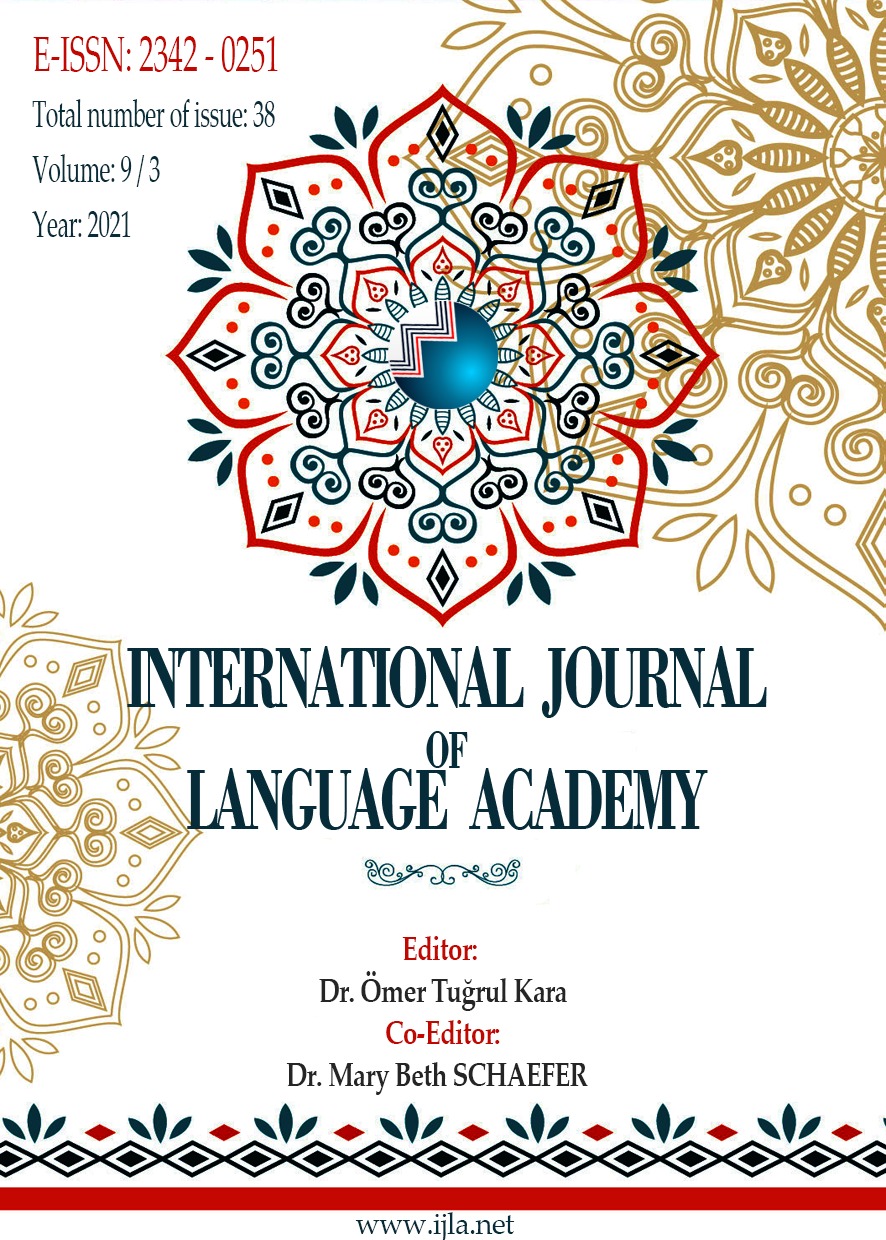A CHALLENGE AGAINST STEREOTYPICAL PERCEPTION OF GENDER ROLES: DECONSTRUCTION OF GENDER IN JOANNA RUSS’ THE FEMALE MAN
Author :
Abstract
Feminist söylemleri ve çalışmalarıyla dikkat çeken Russ, The Female Man adlı çalışmasında kadınların karşılaştığı cinsiyet ayrımcılığına dikkat çekiyor ve kalıplaşmış toplumsal cinsiyet rollerini yapı bozuma uğratıyor. Bir birinden farklı özelliklere sahip dört kadın karakter yaratan Russ, dünyanın farklı bölgelerinde cinsel yönelimleri nedeniyle farklı tutumlara maruz kalan kadınların bir nevi sesi oluyor. Russ'a göre toplumsal cinsiyet kavramının anlaşılabilmesi için sadece ataerkilliğe veya ırka odaklanmak yerine, kadınların durumunu geniş bir yelpazede ele almak gerekir. Russ, toplumda yaygın olan toplumsal cinsiyet algısını yapı bozuma uğratarak yeni bir düşünce inşa ediyor ve okuyucunun farklı bir bakış açısına sahip olmasını sağlıyor. Okurda bir merak duygusu uyandırarak farklı bir bakış açısı sağlayan Russ, romanında yer verdiği konuları hicivli bir şekilde işliyor; böylece geleneksel ciddi tonda yazılmış romanlardan ayrılıyor ve okuyucunun toplumsal cinsiyet algısında yeni alternatifler sunar. Russ, romanındaki belirgin atmosfer ve yaklaşımla, aslında döneminin ve sonraki dönemlerin cinsiyetçi anlayışına başkaldırıyor. Bu makale, Russ'ın kendine has çok yönlü toplumsal cinsiyet kavramını yansıtarak, klişeleşmiş toplumsal cinsiyet kavramı ve toplumsal cinsiyet rolleri algısını nasıl yapı bozuma uğrattığını incelemeye yönelik bir girişim olacaktır. Ayrıca bu çalışmada Russ'ın birbirinden farklı özelliklere sahip çeşitli kadın karakterleri cinsiyet rolleri bağlamında nasıl yarattığını yansıtmaya çalışacağım.
Keywords
Abstract
Attracting attention with her feminist discourses and works, Russ draws attention to gender discrimination faced by women in her work named The Female Man and deconstructs stereotypical gender roles. Creating four different female characters with unique features, Russ becomes a kind of voice for the women who are subjected to diverse negative attitudes due to their sexual orientation in disparate regions of the world. According to Russ, in order to comprehend the concept of gender, women's conditions should be addressed with a broad spectrum rather than focusing solely on patriarchy or race. Russ reconstructs a new thought by deconstructing gender conventions that are prevalent in society, allowing the reader to have a different perspective. With a different perspective by arousing a sense of wonder in the reader, Russ satirically covers the subjects that she includes in her novel; thus, she departs from the traditional novels and offers new alternatives in the reader's perception of gender. With the distinct atmosphere and approach in her novel, Russ rebels against the sexist notion of her era and the following periods. This article will be an attempt to analyze how Russ deconstructs the perception of stereotypical gender notion and gender roles reflecting her multifaceted notion of gender. Furthermore, in this study, I will try to reflect how Russ creates miscellaneous female characters with divergent features in terms of gender roles.
Keywords
- Barker, C. (2000). Cultural studies, theory and practice. London: Sage Publications.
- Beauvoir, S. (1989). The second sex. Vintage Books.
- Butler, J. (1988). Performative acts and gender constitution: an essay in phenomenology and feminist theory. Theatre Journal, 40(4), 519-531. doi:10.2307/3207893
- Chow, E. N., Wilkinson, D. Y., & Zinn, M. B. (1996). Race, class, & gender: common bonds, different voices. Sage Publications.
- Ekler, O. (2020). “A Study on Lord Byron’s Cain: A Mystery and Federico Garcia Lorca’s Blood Wedding”. English Studies in the 21st Century. Antakyalıoğlu, Z., Asiatidou, K., Gündüz, E. İ., Kavak, E., & Almacıoğlu, G. (Eds.). UK: Cambridge Scholars Publishing.
- Frye, M. (1983). The politics of reality, freedom, C.A: Crossing Press.
- Kılıç, V. (2021). Re-orienting the male gaze and subversion of gender roles in Delarivier Manley’s The Royal Mischief. Kültür Araştırmaları Dergisi, (9), 155-168. DOI: 10.46250/kulturder.9121116.
- Kinnear, K. (1997). Women in the third world: a reference handbook. Santa Barbara: ABC- CLIO.
- Knowles, A. (2015). The gender of silence: Irigaray on the measureless measure. The Journal of Speculative Philosophy, 29(3), 302-313. doi:10.5325/jspecphil.29.3.0302
- Richmond-Abbott, M. (1992). Masculine and feminine. gender roles over the life cycle. 2nd ed. New York: McGraw-Hill, Inc.
- Russ, J. (1986). The Female Man. Boston: Beacon Press.
- Russ, J. (2005). The Two of Them. Middletown, Conn: Wesleyan University Press.
- Scott, J. (1986). Gender: a useful category of historical analysis. The American Historical Review, 91(5), 1053-1075. doi:10.2307/1864376
- Tyson, L. (2006). Critical theory today, a user-friendly guide. Routledge.
- Westbrook, L., & Schilt, K. (2014). Doing gender, determining gender: transgender people, gender panics, and the maintenance of the sex/gender/sexuality system. Gender and Society, 28(1), 32-57
- Zinn, H. (1999). A people’s history of the United States 1492- present. New York: Harper Perennial.





